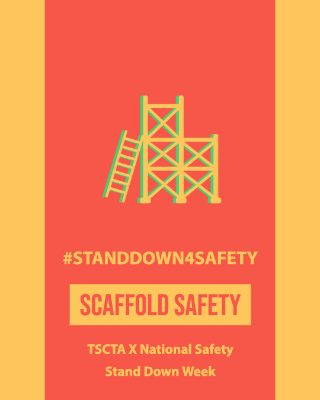Like the skyscrapers they helped build, scaffolds are a foundational part of The City’s skyline. Symbolic of the never-ending drive for renewal and expansion that fuels the construction industry, nearly everyone is familiar with them in one form or another. As such, they are also aware of the potential risk that, for instance, falling debris and even full collapses from these structures pose. But as is so often the case, for construction workers the risk of falling remains the most pressing of concerns.
CHECK FOR POINTS OF SCAFFOLD SAFETY
Scaffold-related fall protection starts before a single person begins work. It is imperative that they are constructed with a solid base along with decks that are level and fully planked. Along with posts or legs that are plumb, the base of the scaffold must have base plates (often part of the screw jack) and mud sills for added support. It should also have screw jacks for leveling inserted in the legs of the scaffold, its guys and ties to the building appropriately installed, as well as ways to get on and off that meet OSHA rules for access.
This must be checked before use, by a designated competent person who must confirm that all of these aspects are in line with OSHA regulation, which also necessitates guardrails and harnesses for those jobs taking place above ten feet in the air.
GET TRAINED
While basic safety knowledge will get you far in life, because of the many unique issues inherent to scaffolds, they are a primary focus for occupational safety organizations and training in particular. To wit, OSHA requires employers to provide the following training:
- By a competent person to all workers assigned to erect and/or disassemble a scaffold.
- By a qualified person to all workers who work on a scaffold.
Furthermore, employers must provide training on the type of scaffold you are assigned to erect, disassemble, or work on. They must also retrain employees when inadequacies are observed, changes in worksite conditions occur or when it is believed that an employee lacks the skill or understanding needed for safe work involving the erection, use or dismantling of the scaffold.
All of this is done to ensure that the extreme benefits of scaffold use aren’t negated by the fundamental issues and risks involved with working at height, which considering all the astounding work they’ve helped create seems like a worthy tradeoff.

